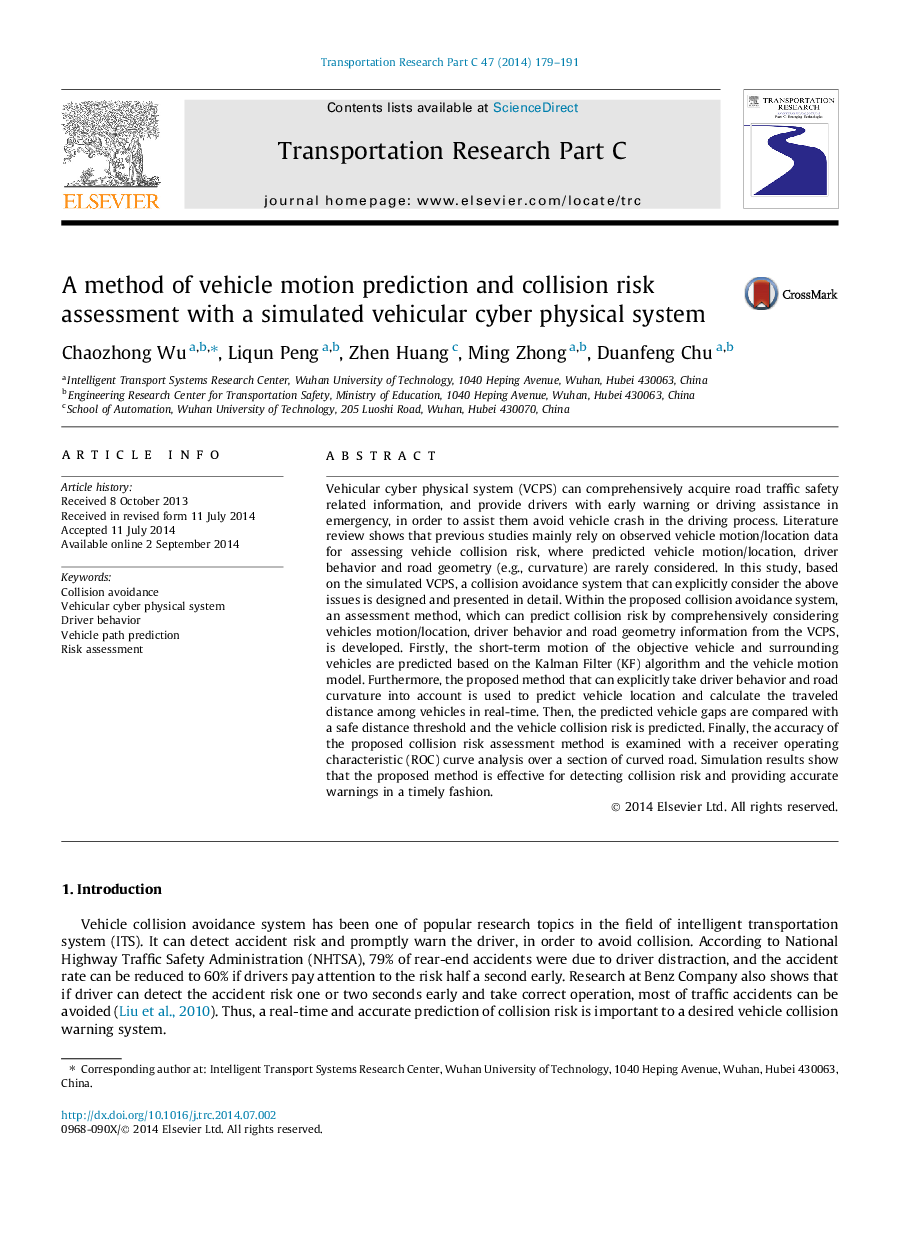| Article ID | Journal | Published Year | Pages | File Type |
|---|---|---|---|---|
| 526427 | Transportation Research Part C: Emerging Technologies | 2014 | 13 Pages |
•A simulated vehicular cyber physical system is designed for developing a vehicle collision avoidance system.•Vehicle collision risk is identified by comprehensively considering driver behavior, vehicles motion and road geometry.•Road curvature is taken into account to estimate the safety threshold between approaching vehicles on the curved road.•Vehicle motion model, driver behavior, road clothoid model and Kalman Filter are applied to predict the vehicle motion.•ROC curve analysis is applied to examine our proposed collision risk assessment method over a section of curved road.
Vehicular cyber physical system (VCPS) can comprehensively acquire road traffic safety related information, and provide drivers with early warning or driving assistance in emergency, in order to assist them avoid vehicle crash in the driving process. Literature review shows that previous studies mainly rely on observed vehicle motion/location data for assessing vehicle collision risk, where predicted vehicle motion/location, driver behavior and road geometry (e.g., curvature) are rarely considered. In this study, based on the simulated VCPS, a collision avoidance system that can explicitly consider the above issues is designed and presented in detail. Within the proposed collision avoidance system, an assessment method, which can predict collision risk by comprehensively considering vehicles motion/location, driver behavior and road geometry information from the VCPS, is developed. Firstly, the short-term motion of the objective vehicle and surrounding vehicles are predicted based on the Kalman Filter (KF) algorithm and the vehicle motion model. Furthermore, the proposed method that can explicitly take driver behavior and road curvature into account is used to predict vehicle location and calculate the traveled distance among vehicles in real-time. Then, the predicted vehicle gaps are compared with a safe distance threshold and the vehicle collision risk is predicted. Finally, the accuracy of the proposed collision risk assessment method is examined with a receiver operating characteristic (ROC) curve analysis over a section of curved road. Simulation results show that the proposed method is effective for detecting collision risk and providing accurate warnings in a timely fashion.
